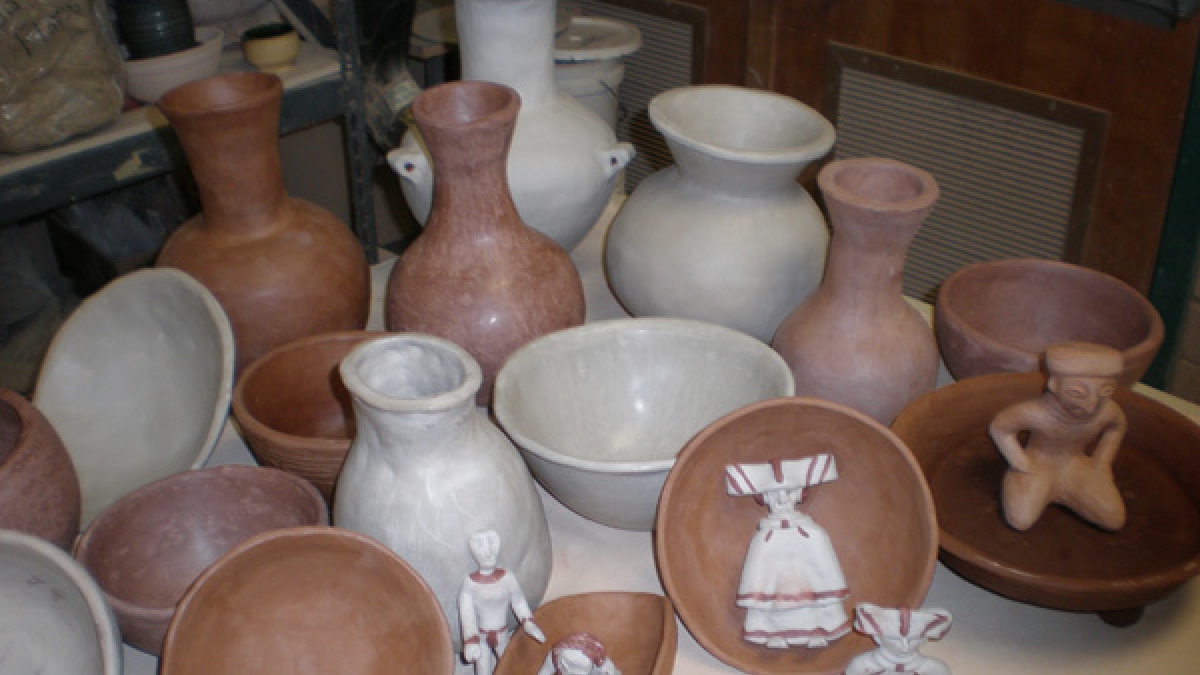Artifact replicas provide chance to watch pit firing

Much goes on behind the scenes of a museum exhibit. Currently, the staff of the Arizona State University Museum of Anthropology is hard at work constructing displays and arranging the loan of artifacts from major national museums in preparation for this fall’s “City Life: Experiencing the World of Teotihuacan.”
And, across town at Mesa Community College, Linda Speranza’s ceramics students have been working with ASU museum studies graduate student Brian Asdell to create reproductions of ancient pieces not usually found in museum collections due to their ordinary, and often undecorated design.
Asdell conducted research and received an introduction to ancient pottery-making techniques from local expert and ASU alum Charles Matthew Thomas before guiding a class of 10 in making the replicas.
Since the upcoming exhibit focuses on the everyday lives of the people of Teotihuacan, most of the recreated ceramics are utilitarian vessels.
The group employed simple pinch and coil techniques that have been used for millennia to create basic storage and cookware vessels.
“As we began making these objects, we started to understand the labor that went into producing them, and the significance of how important these objects were to make everyday life a lot easier,” Asdell says.
He points out that the medium is a low-fire clay, or terracotta, and is not as strong as the stoneware or porcelain we typically use today. Its short lifespan before breaking or wearing down explains why archaeologists often find only broken pots and shards when excavating a site.
The recreated vessels will next be transported to ASU’s Deer Valley Rock Art Center, where they will be fired using an authentic, ancient method. They will be placed in a pit dug into the desert ground and heated by wood fuel over a period of about an hour and a half.
The pit firing originally scheduled for July 26 was cancelled due to rain, but visitors attending the Deer Valley Rock Art Center on August 9 at 5:30 p.m. will be able to witness the unveiling of the vessels after the firing is complete. Reservations are required for the tour and general admission charges apply.
Both the center and the museum are part of the School of Human Evolution and Social Change in the College of Liberal Arts and Sciences, which also oversees the Teotihuacan Research Laboratory. The lab is one of the few research facilities located near the ancient metropolis in the Basin of Mexico. For around 30 years, it has been the base for numerous scholarly explorations of the ruined city by researchers from institutions from around the globe, as well as ASU.
While Teotihuacan is known for its massive pyramids and artistic objects associated with the elite and warrior classes, it once was home to around 100,000 people, most of whom were commoners. The ASU Museum of Anthropology exhibit will strive to get inside the experience of being one of those commoners by surrounding visitors with the sounds residents might have encountered in their daily lives and also providing opportunities to view authentic artifacts and handle replicated ollas.
Deer Valley Rock Art Center is located at 3711 W. Deer Valley Road. Reservations can be made by calling the center at 623-582-8007. The tour starts at 6:30 p.m.
“City Life: Experiencing the World of Teotihuacan” opens Oct. 11 and runs through May 16, 2014, at the ASU Museum of Anthropology. The museum is located in the School of Human Evolution and Social Change Building on the ASU Tempe campus. Admission is always free. For more information call 480-965-6224. The Deer Valley Rock Art Center and ASU Museum of Anthropology are research units in ASU's College of Liberal Arts and Sciences.